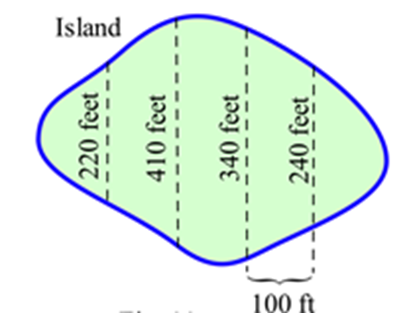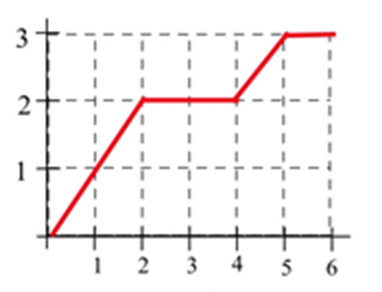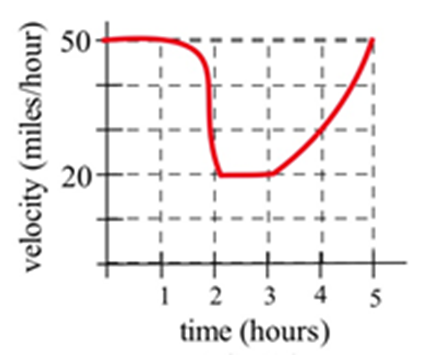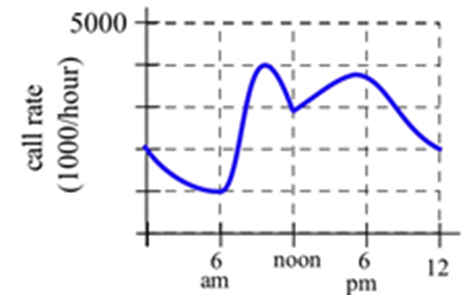3.7.E: Exercises
- Page ID
- 157591
\( \newcommand{\vecs}[1]{\overset { \scriptstyle \rightharpoonup} {\mathbf{#1}} } \)
\( \newcommand{\vecd}[1]{\overset{-\!-\!\rightharpoonup}{\vphantom{a}\smash {#1}}} \)
\( \newcommand{\id}{\mathrm{id}}\) \( \newcommand{\Span}{\mathrm{span}}\)
( \newcommand{\kernel}{\mathrm{null}\,}\) \( \newcommand{\range}{\mathrm{range}\,}\)
\( \newcommand{\RealPart}{\mathrm{Re}}\) \( \newcommand{\ImaginaryPart}{\mathrm{Im}}\)
\( \newcommand{\Argument}{\mathrm{Arg}}\) \( \newcommand{\norm}[1]{\| #1 \|}\)
\( \newcommand{\inner}[2]{\langle #1, #2 \rangle}\)
\( \newcommand{\Span}{\mathrm{span}}\)
\( \newcommand{\id}{\mathrm{id}}\)
\( \newcommand{\Span}{\mathrm{span}}\)
\( \newcommand{\kernel}{\mathrm{null}\,}\)
\( \newcommand{\range}{\mathrm{range}\,}\)
\( \newcommand{\RealPart}{\mathrm{Re}}\)
\( \newcommand{\ImaginaryPart}{\mathrm{Im}}\)
\( \newcommand{\Argument}{\mathrm{Arg}}\)
\( \newcommand{\norm}[1]{\| #1 \|}\)
\( \newcommand{\inner}[2]{\langle #1, #2 \rangle}\)
\( \newcommand{\Span}{\mathrm{span}}\) \( \newcommand{\AA}{\unicode[.8,0]{x212B}}\)
\( \newcommand{\vectorA}[1]{\vec{#1}} % arrow\)
\( \newcommand{\vectorAt}[1]{\vec{\text{#1}}} % arrow\)
\( \newcommand{\vectorB}[1]{\overset { \scriptstyle \rightharpoonup} {\mathbf{#1}} } \)
\( \newcommand{\vectorC}[1]{\textbf{#1}} \)
\( \newcommand{\vectorD}[1]{\overrightarrow{#1}} \)
\( \newcommand{\vectorDt}[1]{\overrightarrow{\text{#1}}} \)
\( \newcommand{\vectE}[1]{\overset{-\!-\!\rightharpoonup}{\vphantom{a}\smash{\mathbf {#1}}}} \)
\( \newcommand{\vecs}[1]{\overset { \scriptstyle \rightharpoonup} {\mathbf{#1}} } \)
\( \newcommand{\vecd}[1]{\overset{-\!-\!\rightharpoonup}{\vphantom{a}\smash {#1}}} \)
\(\newcommand{\avec}{\mathbf a}\) \(\newcommand{\bvec}{\mathbf b}\) \(\newcommand{\cvec}{\mathbf c}\) \(\newcommand{\dvec}{\mathbf d}\) \(\newcommand{\dtil}{\widetilde{\mathbf d}}\) \(\newcommand{\evec}{\mathbf e}\) \(\newcommand{\fvec}{\mathbf f}\) \(\newcommand{\nvec}{\mathbf n}\) \(\newcommand{\pvec}{\mathbf p}\) \(\newcommand{\qvec}{\mathbf q}\) \(\newcommand{\svec}{\mathbf s}\) \(\newcommand{\tvec}{\mathbf t}\) \(\newcommand{\uvec}{\mathbf u}\) \(\newcommand{\vvec}{\mathbf v}\) \(\newcommand{\wvec}{\mathbf w}\) \(\newcommand{\xvec}{\mathbf x}\) \(\newcommand{\yvec}{\mathbf y}\) \(\newcommand{\zvec}{\mathbf z}\) \(\newcommand{\rvec}{\mathbf r}\) \(\newcommand{\mvec}{\mathbf m}\) \(\newcommand{\zerovec}{\mathbf 0}\) \(\newcommand{\onevec}{\mathbf 1}\) \(\newcommand{\real}{\mathbb R}\) \(\newcommand{\twovec}[2]{\left[\begin{array}{r}#1 \\ #2 \end{array}\right]}\) \(\newcommand{\ctwovec}[2]{\left[\begin{array}{c}#1 \\ #2 \end{array}\right]}\) \(\newcommand{\threevec}[3]{\left[\begin{array}{r}#1 \\ #2 \\ #3 \end{array}\right]}\) \(\newcommand{\cthreevec}[3]{\left[\begin{array}{c}#1 \\ #2 \\ #3 \end{array}\right]}\) \(\newcommand{\fourvec}[4]{\left[\begin{array}{r}#1 \\ #2 \\ #3 \\ #4 \end{array}\right]}\) \(\newcommand{\cfourvec}[4]{\left[\begin{array}{c}#1 \\ #2 \\ #3 \\ #4 \end{array}\right]}\) \(\newcommand{\fivevec}[5]{\left[\begin{array}{r}#1 \\ #2 \\ #3 \\ #4 \\ #5 \\ \end{array}\right]}\) \(\newcommand{\cfivevec}[5]{\left[\begin{array}{c}#1 \\ #2 \\ #3 \\ #4 \\ #5 \\ \end{array}\right]}\) \(\newcommand{\mattwo}[4]{\left[\begin{array}{rr}#1 \amp #2 \\ #3 \amp #4 \\ \end{array}\right]}\) \(\newcommand{\laspan}[1]{\text{Span}\{#1\}}\) \(\newcommand{\bcal}{\cal B}\) \(\newcommand{\ccal}{\cal C}\) \(\newcommand{\scal}{\cal S}\) \(\newcommand{\wcal}{\cal W}\) \(\newcommand{\ecal}{\cal E}\) \(\newcommand{\coords}[2]{\left\{#1\right\}_{#2}}\) \(\newcommand{\gray}[1]{\color{gray}{#1}}\) \(\newcommand{\lgray}[1]{\color{lightgray}{#1}}\) \(\newcommand{\rank}{\operatorname{rank}}\) \(\newcommand{\row}{\text{Row}}\) \(\newcommand{\col}{\text{Col}}\) \(\renewcommand{\row}{\text{Row}}\) \(\newcommand{\nul}{\text{Nul}}\) \(\newcommand{\var}{\text{Var}}\) \(\newcommand{\corr}{\text{corr}}\) \(\newcommand{\len}[1]{\left|#1\right|}\) \(\newcommand{\bbar}{\overline{\bvec}}\) \(\newcommand{\bhat}{\widehat{\bvec}}\) \(\newcommand{\bperp}{\bvec^\perp}\) \(\newcommand{\xhat}{\widehat{\xvec}}\) \(\newcommand{\vhat}{\widehat{\vvec}}\) \(\newcommand{\uhat}{\widehat{\uvec}}\) \(\newcommand{\what}{\widehat{\wvec}}\) \(\newcommand{\Sighat}{\widehat{\Sigma}}\) \(\newcommand{\lt}{<}\) \(\newcommand{\gt}{>}\) \(\newcommand{\amp}{&}\) \(\definecolor{fillinmathshade}{gray}{0.9}\)3.7 Exercises
In problems 1 – 4, use the values in the table to estimate the areas.
| \(x\) | \(f(x)\) | \(g(x)\) | \(h(x)\) |
|
0 |
5 |
2 |
5 |
|
1 |
6 |
1 |
6 |
|
2 |
6 |
2 |
8 |
|
3 |
4 |
2 |
6 |
|
4 |
3 |
3 |
5 |
|
5 |
2 |
4 |
4 |
|
6 |
2 |
0 |
2 |
1. Estimate the area between \(f\) and \(g\), between \(x = 0\) and \(x = 4\).
2. Estimate the area between \(g\) and \(h\), between \(x = 0\) and \(x = 6\).
3. Estimate the area between \(f\) and \(h\), between \(x = 0\) and \(x = 4\).
4. Estimate the area between \(f\) and \(g\), between \(x = 0\) and \(x = 6\).
Estimate the area of the island shown

In problems 6 – 15, find the area between the graphs of \(f\) and \(g\) for \(x\) in the given interval. Remember to draw the graph!
| 6. \(f(x) = x^2 + 3 \), \(g(x) = 1\) and \(–1 \leq x \leq 2\). |
| 7. \(f(x) = x^2 + 3 \), \(g(x) = 1 + x\) and \(0 \leq x \leq 3\). |
| 8. \(f(x) = x^2 \), \(g(x) = x\) and \(0 \leq x \leq 2\). |
| 9. \(f(x) = (x –1)^2 \), \(g(x) = x + 1\) and \(0 \leq x \leq 3\). |
| 10. \(f(x) = \frac{1}{x}\), \(g(x) = x\) and \(1 \leq x \leq e\). |
| 11. \(f(x) = \sqrt{x}\), \(g(x) = x\) and \(0 \leq x \leq 4\). |
| 12. \(f(x) = 4 – x^2 \), \(g(x) = x + 2\) and \(0 \leq x \leq 2\). |
| 13. \(f(x) = e^x\), \(g(x) = x\) and \(0 \leq x \leq 2\). |
| 14. \(f(x) = 3 \), \(g(x) = \sqrt{1-x^2}\) and \(0 \leq x \leq 1\). |
| 15. \(f(x) = 2 \), \(g(x) = \sqrt{4-x^2}\) and \(–2 \leq x \leq 2\). |
For problems 16-18, find the volume of the solid obtained by rotating the specified region about the \(x\) axis.
16. Region under \(f(x) = x^2 + 3\) for \(–1 \leq x \leq 2\).
17. Region under \(f(x) = 4 – x^2\) for \(0 \leq x \leq 2\).
18. Region under \(f(x) = \frac{1}{x}\) for \(1 \leq x \leq 2\).
In problems 19 and 20 use the values in the table to estimate the average values.
| \(x\) | \(f(x)\) | \(g(x)\) |
|
0 |
5 |
2 |
|
1 |
6 |
1 |
|
2 |
6 |
2 |
|
3 |
4 |
2 |
|
4 |
3 |
3 |
|
5 |
2 |
4 |
|
6 |
2 |
0 |
19. Estimate the average value of \(f\) on the interval [0, 6].
20. Estimate the average value of \(g\) on the interval [0, 6].
In problems 21 – 26, find the average value of \(f\) on the given interval.

21. \(f(x)\) from the graph for \(0 \leq x \leq 2\).
22. \(f(x)\) from the graph for \(0 \leq x \leq 4\).
23. \(f(x)\) from the graph for \(1 \leq x \leq 6\).
24. \(f(x)\) from the graph for \(4 \leq x \leq 6\).
25. \(f(x) = 2x + 1\) for \(0 \leq x \leq 4\).
26. \(f(x) = x^2\) for \(0 \leq x \leq 2\).
The graph shows the velocity of a car during a 5 hour trip.

(a) Estimate how far the car traveled during the 5 hours.
(b) At what constant velocity should you drive in order to travel the same distance in 5 hours?
The graph shows the number of telephone calls per minute at a large company.

Estimate the average number of calls per minute
(a) From 8 am to 5 pm.
(b) From 9 am to 1 pm.


